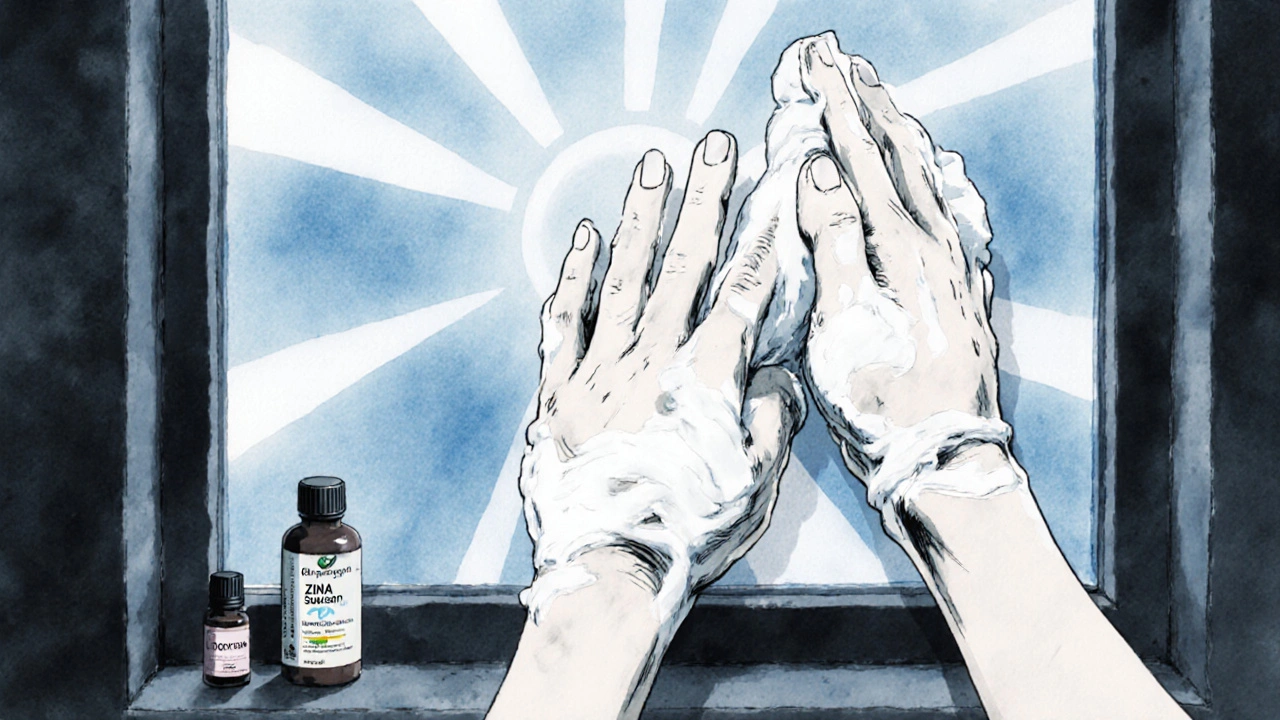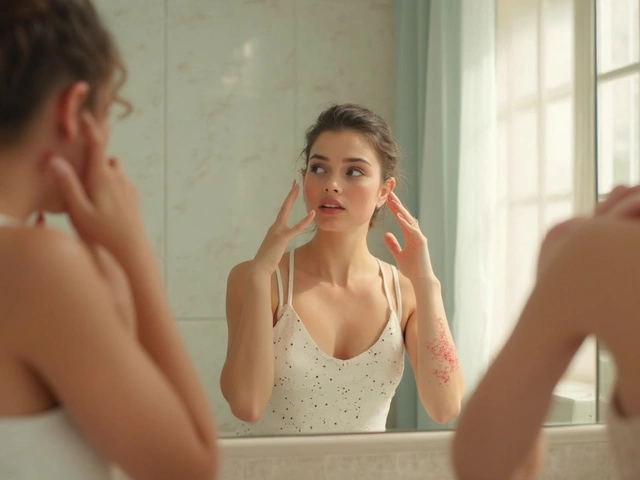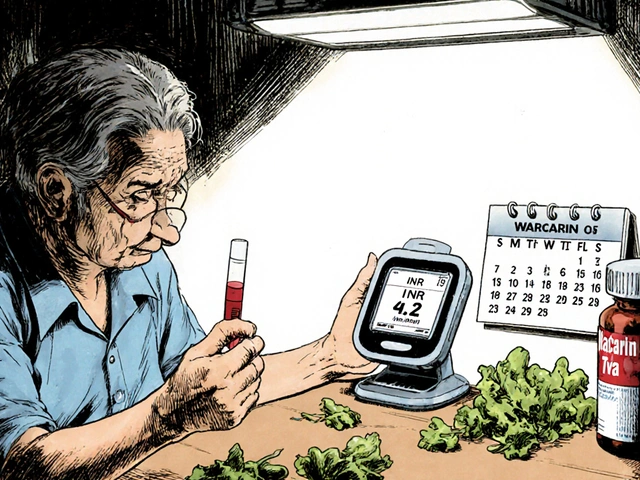Sun Protection Calculator
Personal Sun Protection Assessment
Calculate your specific sunscreen needs and protection strategies based on your situation
Recommended Sunscreen Amount
Enter your weight to see calculation
Note: You need 2mg of sunscreen per square centimeter of skin (about 1 ounce for the entire body)
Reapplication Frequency
Enter your weight to see calculation
Note: Reapply every 2 hours or after sweating/swimming
Protection Recommendations
Enter your weight to see calculation
When your skin reacts badly to sunlight-even after just a few minutes outside-you’re not just getting a bad sunburn. You might be experiencing photosensitivity, a condition where your skin overreacts to ultraviolet (UV) light. This isn’t rare. About 1 in 5 people in the U.S. will develop skin cancer by age 70, and for many, it starts with a reaction they didn’t expect: a rash after walking to the car, blisters after sitting near a window, or a burning feeling even on cloudy days. The truth? Sun protection isn’t optional if you’re photosensitive. It’s survival.
What Exactly Is Photosensitivity?
Photosensitivity isn’t one thing. It’s two main types: phototoxic and photoallergic. Phototoxic reactions are more common. They look like a severe sunburn-red, painful, sometimes blistering-and happen when certain chemicals in your body, usually from medications or skincare products, react with UV light. Photoallergic reactions are rarer and immune-driven. They show up as an itchy, eczema-like rash that can spread beyond sun-exposed areas. Both types can be triggered by things you didn’t even know were a problem.Common culprits? Antibiotics like doxycycline and tetracycline, diuretics like hydrochlorothiazide, NSAIDs like ibuprofen, and even some acne treatments with retinoids or alpha-hydroxy acids. Essential oils like bergamot in perfumes or lotions can also cause reactions. If you’ve started a new medication and suddenly burn easier than before, check with your pharmacist. They can tell you if it’s photosensitizing.
Why Regular Sunscreen Isn’t Enough
Most people think SPF 30 sunscreen is good enough. For someone with normal skin, maybe. But for photosensitive skin, SPF 30 blocks about 97% of UVB rays. SPF 50 blocks 98%. That extra 1% matters-because your skin isn’t just sensitive, it’s on edge. The NCBI Bookshelf recommends SPF 50+ for anyone with known photosensitivity. And it’s not just about the number. The type of sunscreen matters too.Chemical sunscreens absorb UV light. But for sensitive skin, they can cause irritation or even trigger a reaction themselves. Physical blockers-zinc oxide and titanium dioxide-sit on top of the skin and reflect UV rays. They work immediately, don’t break down as fast, and are far less likely to cause allergic reactions. Look for labels that say “zinc oxide” or “titanium dioxide” as the first active ingredients. Avoid anything with oxybenzone or octinoxate if you’re prone to reactions.
And here’s the big mistake most people make: applying too little. You need 2 milligrams of sunscreen per square centimeter of skin. That’s about one ounce-enough to fill a shot glass-for your whole body. Most people use half that. And if you don’t reapply every two hours-or after swimming, sweating, or towel-drying-you’re giving yourself false protection. Set phone alarms if you have to. Your skin won’t forgive you for forgetting.
UPF Clothing: Your Secret Weapon
Sunscreen fades. Hats slip. Umbrellas blow away. But clothing? If it’s rated UPF 50+, it’s a shield. UPF stands for Ultraviolet Protection Factor. UPF 50 means only 1/50th-2%-of UV radiation gets through. That’s better than most sunscreens. And unlike sunscreen, it doesn’t need reapplying. It works when wet. It works when you’re tired. It works when you forget.Not all fabrics are equal. Dark, tightly woven polyester, denim, or wool offer the best protection. Light-colored cotton or linen? They let through more UV-especially when wet. Look for clothing labeled UPF 50+. Brands like Coolibar, Columbia, and UV Skinz make lightweight, breathable options that don’t feel like a hazmat suit. You can find UPF shirts, hoodies, pants, and even gloves now. Wear them. Even on overcast days. UVA rays penetrate clouds.
And don’t forget the little things: your ears, the back of your neck, the tops of your feet. These are the spots that burn first-and the ones people miss. A wide-brimmed hat (3 inches or more) is non-negotiable. Sunglasses with UV protection? Essential. Your eyes can get sunburned too.

Windows Don’t Protect You
You’re sitting by a window at work. It’s cool. You’re not burning. But you’re still being exposed. Standard glass blocks 97% of UVB rays-the ones that cause sunburn. But it lets through 75% of UVA rays-the ones that age skin and trigger photosensitivity reactions. That’s why people with lupus or porphyria get rashes even indoors.If you spend time near windows at home or in your car, install UV-blocking film. It’s affordable-$5 to $15 per square foot-and blocks up to 99% of UVA. You won’t notice the difference in visibility, but your skin will. Some patients with severe photosensitivity switch to night shifts just to avoid daylight. That’s how serious it gets.
When Shade Isn’t Enough
Shade helps-but not as much as you think. Under a tree, you still get 50% of UV radiation. Under a beach umbrella? Around 75%. Why? UV rays bounce off sand, water, concrete, even snow. That’s why you can get burned under an umbrella. The solution? Combine shade with clothing and sunscreen. Use a UPF 50+ umbrella or canopy when outside. Portable ones exist now-lightweight, easy to carry, and rated for full UV protection.Plan your outdoor time wisely. UV intensity peaks between 10 a.m. and 4 p.m. That’s when your shadow is shorter than you are. Avoid being outside then. If you must go out, go early or late. Check the UV index on your weather app. If it’s above 3, take full precautions. If it’s above 8, stay inside if you can.
Oral Supplements That Help
You can’t eat your way out of photosensitivity. But some supplements can add a layer of protection. Polypodium leucotomos, an extract from a Central American fern, has been shown to reduce sunburn reactions and improve tolerance to UV exposure. It’s not a replacement for sunscreen-it’s an add-on. Studies suggest it gives about SPF 3-5 protection when taken daily.Nicotinamide (vitamin B3) is even more powerful. A landmark study published in the New England Journal of Medicine found that taking 500 mg twice a day reduced new non-melanoma skin cancers by 23% in high-risk patients. It doesn’t prevent sunburn, but it helps your skin repair UV damage faster. Talk to your doctor before starting any supplement. It’s not for everyone, but for those with chronic photosensitivity or a history of skin cancer, it’s a game-changer.
What to Avoid
Stay away from tanning products with dihydroxyacetone (DHA). They give you a fake tan but offer only SPF 3-barely any protection. And don’t use essential oils like bergamot, lime, or lemon on your skin before going out. They’re phototoxic. Even some perfumes and aftershaves can trigger reactions. Read labels. If you’re unsure, patch test on a small area of skin first.Also, avoid peak UV hours for outdoor exercise. Walking at 7 a.m. is safer than jogging at noon. Gardening? Do it before 9 a.m. or after 5 p.m. Keep a hat and UPF shirt in your car. Keep sunscreen in your bag. Make protection part of your routine-like brushing your teeth.
Living With Photosensitivity
It’s exhausting. Planning every outing. Checking the UV index. Reapplying sunscreen every two hours. Wearing long sleeves in summer. It feels like your life is ruled by the sun. But you’re not alone. Millions manage this every day. The key is consistency, not perfection. Miss a reapplication? Don’t panic. Just get inside. Forget your hat? Cover up with a towel. It’s about reducing exposure, not eliminating it entirely.Some people install UV film on all their windows. Others use a UV meter app to check exposure levels in real time. Some wear UPF clothing even indoors. It’s extreme-but for some, it’s the only way to live normally. Your goal isn’t to be perfect. It’s to be protected. Every little bit helps.
When to See a Dermatologist
If you’ve had repeated sun reactions without clear cause, or if your skin is changing-new moles, persistent rashes, or sores that won’t heal-see a dermatologist. Photosensitivity can be a sign of underlying conditions like lupus, porphyria, or even certain types of skin cancer. A dermatologist can run tests to confirm the cause and recommend personalized protection strategies. They can also prescribe topical treatments or oral medications to reduce flare-ups.Don’t wait until you’re in pain. Early intervention makes a huge difference.
Can photosensitivity go away on its own?
Sometimes, yes-if it’s caused by a temporary medication, like an antibiotic, and you stop taking it. But if it’s linked to an autoimmune condition like lupus, it won’t go away. Even if symptoms fade, your skin remains more vulnerable to UV damage. Lifelong sun protection is still required.
Is SPF 100 better than SPF 50?
Not significantly. SPF 50 blocks 98% of UVB rays. SPF 100 blocks 99%. That extra 1% offers minimal real-world benefit and can give a false sense of security. The key is applying enough and reapplying often-not chasing the highest number.
Can I use tanning beds if I’m photosensitive?
Absolutely not. Tanning beds emit intense UVA and UVB radiation-often stronger than the midday sun. For photosensitive individuals, they can trigger severe burns, blistering, and long-term skin damage. The risk of skin cancer skyrockets. Avoid them completely.
Do I need sun protection on cloudy or winter days?
Yes. Up to 80% of UV rays penetrate cloud cover. Snow reflects up to 80% of UV radiation, increasing exposure. Winter sun can still cause damage, especially at higher altitudes. Sun protection isn’t seasonal-it’s daily.
What should I do if I get a photosensitivity reaction?
Get out of the sun immediately. Apply a cool compress. Use a fragrance-free moisturizer or hydrocortisone cream (1%) if the skin is inflamed. Avoid popping blisters. If the reaction is severe-widespread rash, fever, or pain-see a doctor. You may need prescription medication to calm the reaction.
Photosensitivity doesn’t mean you can’t live fully. It just means you have to be smarter about the sun. You don’t need to hide indoors. You need the right tools: UPF clothing, zinc oxide sunscreen, window film, and awareness. The sun isn’t your enemy-but unprotected exposure is. Protect yourself like your skin depends on it. Because it does.




Chris Ashley
November 13, 2025 AT 06:09Bro I used to think sunscreen was for losers until I got burned so bad after a walk to my car I looked like a lobster. Now I wear a hat indoors. No joke. My dog thinks I’m crazy but my skin thanks me.
Brittany C
November 15, 2025 AT 01:12As someone with lupus, this is the most accurate summary I’ve read in years. The UVA penetration through windows is the silent killer. I’ve had flares from sitting by my kitchen window. UV-blocking film was the single best investment I’ve ever made-$200 for my whole house and I haven’t had a flare in 14 months.
gent wood
November 16, 2025 AT 15:38People don’t get it until it happens to them. I used to roll my eyes at my sister wearing long sleeves in July. Then I started doxycycline for acne and spent three days in bed with blisters on my arms. I didn’t even know the medication could do that. Now I check every pill with my pharmacist. This isn’t just about sunscreen-it’s about awareness.
Sean Evans
November 16, 2025 AT 21:44SPF 100 is a scam. You’re not getting 2x the protection. You’re just paying for marketing. And don’t even get me started on people who slap on a dime-sized amount and think they’re covered. Your skin is not a damn coupon. If you’re photosensitive, you’re not ‘being careful’-you’re surviving. Stop pretending this is a lifestyle choice. It’s medical necessity.
Anjan Patel
November 18, 2025 AT 21:24My cousin in Delhi got diagnosed with porphyria after a trip to Goa. She thought it was just heat rash. Then she started breaking out even when she opened her curtains. Now she lives in a dark room with blackout curtains and wears gloves to the grocery store. She’s 24. This isn’t a ‘sun thing.’ It’s a life-altering condition and nobody talks about it. You’re lucky if you catch it early.
Ryan Anderson
November 19, 2025 AT 14:33Polypodium leucotomos is legit. I’ve been taking it for 8 months now. I still use zinc oxide sunscreen and UPF clothing, but I can actually go outside for 10 minutes without turning red. It’s not magic, but it’s science. If you’re photosensitive and haven’t talked to your doctor about this, you’re leaving protection on the table.
Eleanora Keene
November 20, 2025 AT 11:30I’ve been managing photosensitivity for 12 years. I used to feel like a prisoner. Now I carry a foldable UPF umbrella in my purse, keep sunscreen in my glovebox, and wear a wide-brimmed hat to the grocery store. It’s not glamorous, but it’s freedom. You don’t have to hide-you just have to plan. And that’s okay.
Joe Goodrow
November 21, 2025 AT 17:22Why are we letting this happen? In America we have the best sun protection tech in the world. Yet people still get burned because they’re too lazy to reapply. And don’t even get me started on the ‘natural’ sunscreen brands that use coconut oil as their base. That’s not protection-that’s a death wish. Get real. Your skin isn’t a yoga retreat.
Don Ablett
November 22, 2025 AT 17:05It is noteworthy that the spectral transmission characteristics of standard window glass permit a significant proportion of UVA radiation to penetrate, thereby exposing individuals to chronic photodamage even in ostensibly protected environments. The clinical implications of this phenomenon are underappreciated in general practice.
Kevin Wagner
November 24, 2025 AT 06:49Let me tell you something-I used to hate UPF clothing. Looked like I was dressed for a lab. Then I tried Coolibar. Now I own five shirts, two hoodies, and a pair of pants that feel like cloud silk. I wear them to the beach, to the park, even to brunch. People ask if I’m ‘trying to be trendy.’ I say, ‘No, I’m trying to live.’ And guess what? I’m still the best-dressed one there.
Dilip Patel
November 25, 2025 AT 20:18Everyone’s so obsessed with sunscreen but nobody talks about the real problem-pharmaceutical companies hiding the side effects. My brother got sick from a cheap antibiotic and now he can’t go outside. The FDA knew. They just didn’t care. This isn’t about skin-it’s about corporate greed. Wake up people.
Jane Johnson
November 25, 2025 AT 20:50Actually, the claim that UPF 50 blocks 98% of UV is misleading. It’s 98% of UVB, but UVA protection varies widely by fabric weave and dye. Many UPF garments offer far less UVA shielding than advertised. Always check for the Australian/New Zealand standard (AS/NZS 4399) if you want real protection.